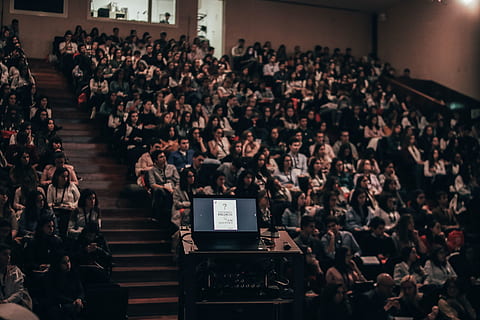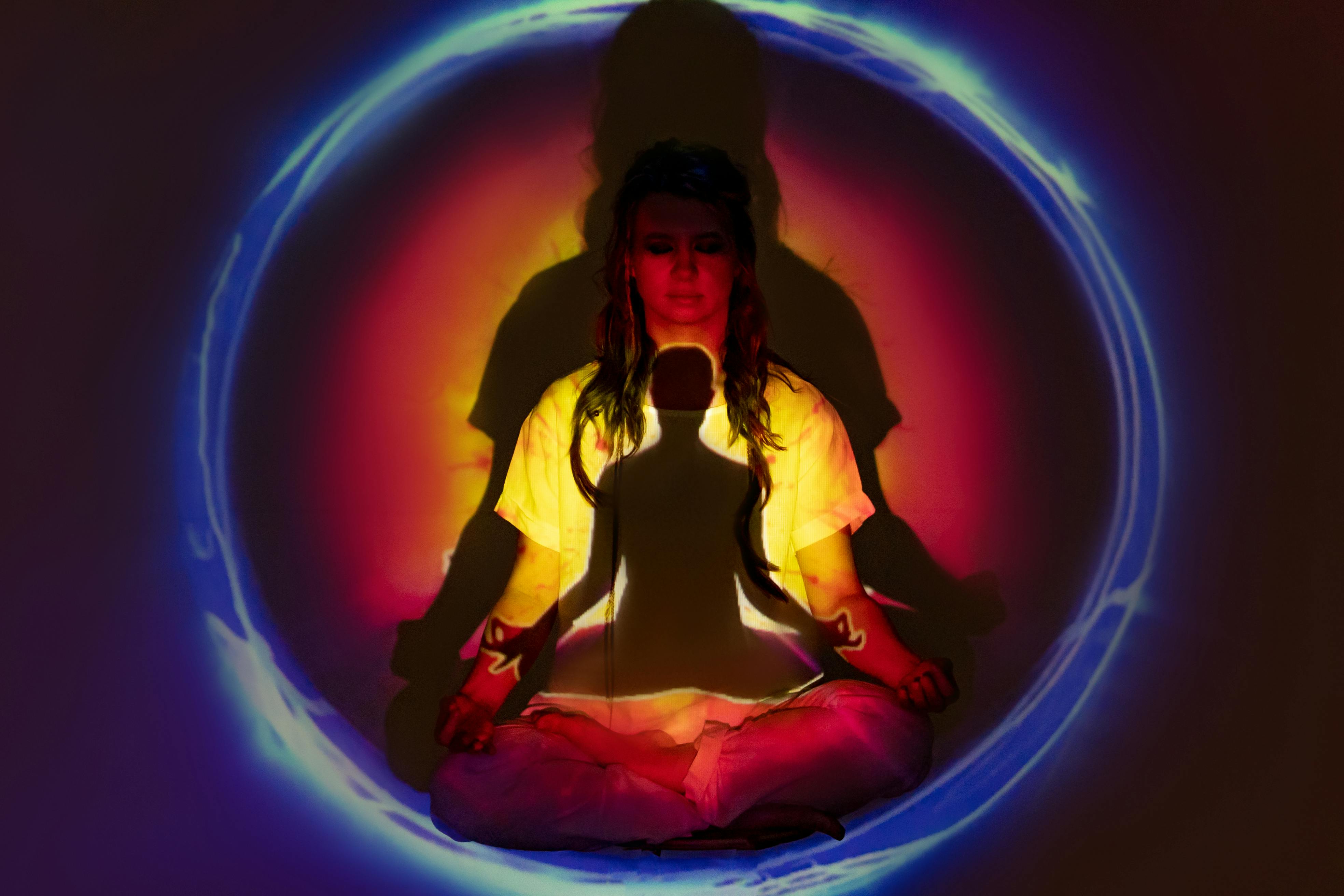 Calibration Methodology for Projector-Digital camera System. Provisional patent filing, 1999. - R. Sukthankar, R. Stockton, M. Mullin. Vision-based mostly presentation control frees the speaker from standing beside the computer while delivering a speak. The speaker makes use of a pointing machine (typically a laser pointer) to activate virtual buttons on the projected slide to drive the presentation. The system watches the presentation display screen via a digital camera placed anyplace within the room (very like a human audience member). The position of the pointing gadget in the digital camera picture could be decided using image differencing (or every other commonplace laptop vision technique) and the mapping between the digital camera picture and the speaker's slide is given by the projective rework described in the calibration section. The digicam-assisted presentation system also allows the speaker to attract on the slide using pointer gestures, either to focus on specific points, or to make digital annotations. Three pixels on a 1024x768 slide. For details, see: - R. Sukthankar, R. Stockton, M. Mullin.
Calibration Methodology for Projector-Digital camera System. Provisional patent filing, 1999. - R. Sukthankar, R. Stockton, M. Mullin. Vision-based mostly presentation control frees the speaker from standing beside the computer while delivering a speak. The speaker makes use of a pointing machine (typically a laser pointer) to activate virtual buttons on the projected slide to drive the presentation. The system watches the presentation display screen via a digital camera placed anyplace within the room (very like a human audience member). The position of the pointing gadget in the digital camera picture could be decided using image differencing (or every other commonplace laptop vision technique) and the mapping between the digital camera picture and the speaker's slide is given by the projective rework described in the calibration section. The digicam-assisted presentation system also allows the speaker to attract on the slide using pointer gestures, either to focus on specific points, or to make digital annotations. Three pixels on a 1024x768 slide. For details, see: - R. Sukthankar, R. Stockton, M. Mullin.

 CVPR Demo Summary, 2001. - R. Sukthankar, T.-J. Cham, G. Sukthankar. Dynamic Shadow Elimination for Multi-Projector Displays. We have prolonged our shadow elimination system to concurrently take away the sunshine falling on occluded objects. For particulars, see: - T.-J. Cham, J. Rehg, R. Sukthankar, G. Sukthankar. Shadow Elimination and Occluder Mild Suppression for Multi-Projector Displays. Proceedings of Pc Vision and Pattern Recognition, 2003. - J. Rehg, M. Flagg, T.-J. Cham, R. Sukthankar, G. Sukthankar. Projected Light Shows Using Visual Suggestions. Proceedings of ICARCV, 2002. - T.-J. Cham, R. Sukthankar, J. Rehg, G. Sukthankar. Shadow Elimination and Occluder Gentle Suppression for Multi-HY300 Pro projector user experiences Displays. We current a sensible imaginative and prescient-based calibration system for large format multi-projector shows. A spanning tree of homographies, automatically constructed from several digicam photos, accurately registers arbitrarily-mounted projectors to a global reference frame. Experiments on the 18'x8' Princeton Show Wall (a 24 projector array with 6000x3000 resolution) display that our algorithm achieves sub-pixel accuracy even on giant show surfaces. A direct comparison with the previous best algorithm shows that our technique is considerably extra correct, requires far fewer digicam photographs, and runs quicker by an order of magnitude. For details, see: - H. Chen, R. Sukthankar, G. Wallace, Okay. Li. Scalable Alignment of Large-Format Multi-Projector Displays Using Digicam Homography Trees. Proceedings of Visualization, 2002. - H. Chen, R. Sukthankar, G. Wallace, T.-J. Cham. Calibrating Scalable Multi-Projector Displays Utilizing Digicam Homography Bushes. CVPR Technical Sketch, 2001. - H. Chen, R. Sukthankar, G. Wallace, T.-J. Cham. Correct Calculation of Camera Homography Timber for Calibration of Scalable Multi-Projector Displays. Princeton University Laptop Science TR-639-01.
CVPR Demo Summary, 2001. - R. Sukthankar, T.-J. Cham, G. Sukthankar. Dynamic Shadow Elimination for Multi-Projector Displays. We have prolonged our shadow elimination system to concurrently take away the sunshine falling on occluded objects. For particulars, see: - T.-J. Cham, J. Rehg, R. Sukthankar, G. Sukthankar. Shadow Elimination and Occluder Mild Suppression for Multi-Projector Displays. Proceedings of Pc Vision and Pattern Recognition, 2003. - J. Rehg, M. Flagg, T.-J. Cham, R. Sukthankar, G. Sukthankar. Projected Light Shows Using Visual Suggestions. Proceedings of ICARCV, 2002. - T.-J. Cham, R. Sukthankar, J. Rehg, G. Sukthankar. Shadow Elimination and Occluder Gentle Suppression for Multi-HY300 Pro projector user experiences Displays. We current a sensible imaginative and prescient-based calibration system for large format multi-projector shows. A spanning tree of homographies, automatically constructed from several digicam photos, accurately registers arbitrarily-mounted projectors to a global reference frame. Experiments on the 18'x8' Princeton Show Wall (a 24 projector array with 6000x3000 resolution) display that our algorithm achieves sub-pixel accuracy even on giant show surfaces. A direct comparison with the previous best algorithm shows that our technique is considerably extra correct, requires far fewer digicam photographs, and runs quicker by an order of magnitude. For details, see: - H. Chen, R. Sukthankar, G. Wallace, Okay. Li. Scalable Alignment of Large-Format Multi-Projector Displays Using Digicam Homography Trees. Proceedings of Visualization, 2002. - H. Chen, R. Sukthankar, G. Wallace, T.-J. Cham. Calibrating Scalable Multi-Projector Displays Utilizing Digicam Homography Bushes. CVPR Technical Sketch, 2001. - H. Chen, R. Sukthankar, G. Wallace, T.-J. Cham. Correct Calculation of Camera Homography Timber for Calibration of Scalable Multi-Projector Displays. Princeton University Laptop Science TR-639-01.
Current approaches to keystone correction, whether or not optical or digital, only deal with the restricted class of distortions brought on by vertical misalignment of the projector symmetric trapezoidal keystoning, and require handbook adjustment. Our system corrects all distortions attributable to misaligned projector placement, without need for human intervention. This is completed by prewarping the image that is distributed to the projector, in such a way that the prewarping precisely negates the distortion caused by projector misalignment. One can not solve the issue just by prewarping the image in order that it seems undistorted to the camera since the digicam is itself not aligned to the presentation display. These pictures provide some insight into the issue, and our resolution is absolutely-described in the following papers. R. Sukthankar, R. Stockton, M. Mullin. Smarter Shows: Exploiting Homography in Digital camera-Projector Methods. Proceedings of Worldwide Convention on Computer Vision, 2001. - R. Sukthankar, R. Stockton, M. Mullin. Automatic Keystone Correction for Digicam-assisted Presentation Interfaces. Just Research on this expertise: - M. Mullin, R. Sukthankar, R. Stockton.
Smarter Displays: Exploiting Homography in Digicam-Projector Systems. Proceedings of Worldwide Convention on Computer Vision, 2001. - R. Sukthankar, R. Stockton, M. Mullin. Self-Calibrating Digicam-Assisted Presentation Interface. Proceedings of International Conference on Automation, Management, Robotics and Laptop Vision, 2000 (invited discuss). JustResearch on this expertise: - R. Sukthankar, R. Stockton, M. Mullin, M. Kantrowitz. Imaginative and prescient-based Coupling between Pointer Actions and Projected Photos. We've developed a new application for camera-projector methods where a number of entrance projectors are used to generate redundant illumination over the show surface. A multi-projector display with shadow elimination could provide a good different to costly rear-projection programs that require specialized projection surfaces and space behind the screen for projectors. The projectors are positioned at extreme angles however oriented so that their projection areas overlap considerably. By appropriately pre-warping the images despatched to every projector, the system generates a pointy, keystone-corrected picture in the overlap zone. Redundant illumination makes the show resistant to occlusions: the content material in a partially-occluded region is readable as long as one projector maintains an unblocked mild path.
Unfortunately, the occlusion still causes a shadow in that region (seen as a darker patch). We reveal a system that routinely detects and dynamically eliminates these shadows so that the show floor seems shadow-free even within the presence of a number of, shifting occluders. The system dynamically identifies occlusions utilizing cameras, and eliminates shadows by appropriately adjusting the photographs projected by each projector. Quite than locating occluders by monitoring objects within the surroundings, our method focuses solely on detecting artifacts on the show surface. Shadows are eradicated utilizing a suggestions loop that requires no specific photometric fashions of the environment. No assumptions are made concerning the areas, sizes or shapes of occluders. For particulars, see: - R. Sukthankar, T.-J. Cham, G. Sukthankar. Dynamic Shadow Elimination for Multi-Projector Displays. Proceedings of Pc Vision and Pattern Recognition, 2001. - CVPR-2001 convention video (AVI file) - T.-J. Cham, J. Rehg, G. Sukthankar, R. Sukthankar. Shadow Elimination and Occluder Light Suppression for Multi-Projector Displays.